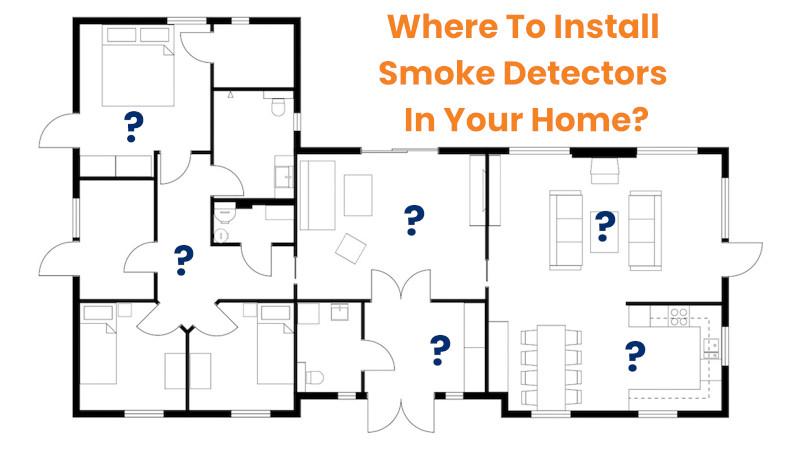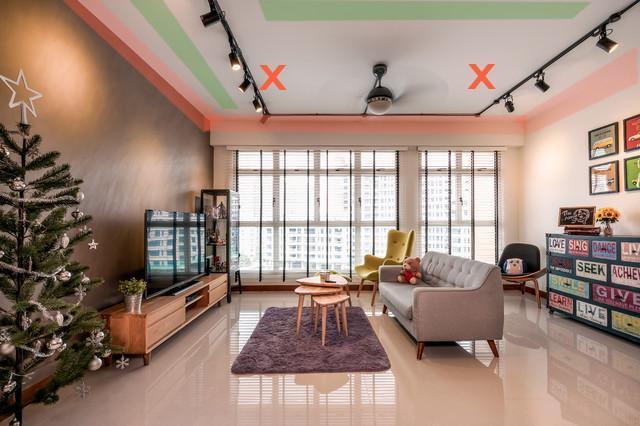A smoke detector can give early warning on fire risk only if installed in correct locations. Installed in a wrong location, a smoke detector will fail to detect smoke and fail to give you early warning. On average, it takes only 3 minutes for a fire to occupy the entire house once fire starts to burn.
Smoke Detectors Along Escape Route Out Of Home
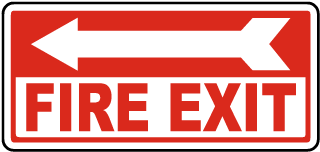
If you can only remember 1 rule, this will be it. Smoke detectors must be along the escape route out of your home. Why? How would you be able to escape if the only escape route out of your home is already filled with smoke? Having detectors along your escape route ensures the path to safety is still clear. Escape route will usually include living room, corridors and staircase landings.
Escape route will usually include living room, corridors and staircase landings.
For single-storey homes, SCDF recommends
- At least 1 smoke detector in the living room
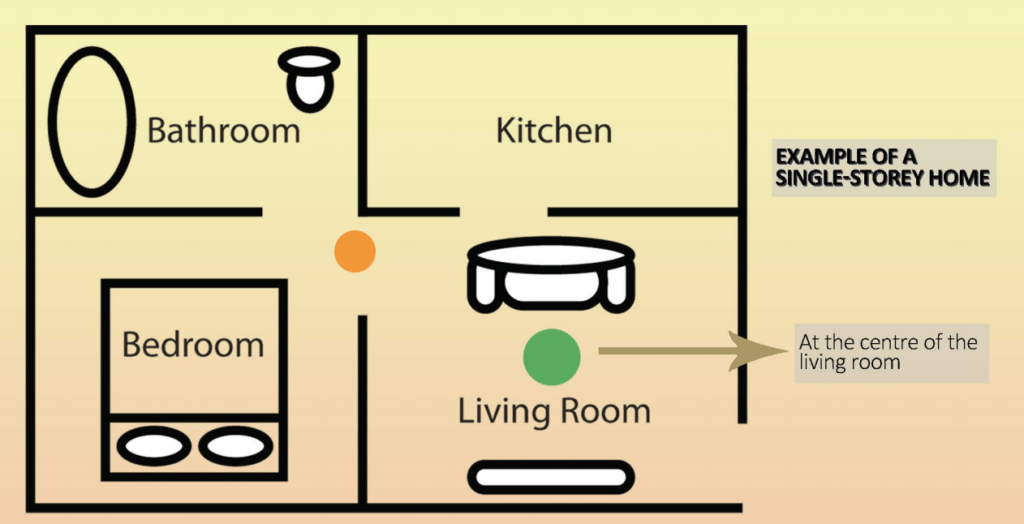
For multi-storey homes, SCDF recommends
- At least 1 smoke detector per storey
- At least 2 smoke detectors for storeys with floor space > 70 square metres
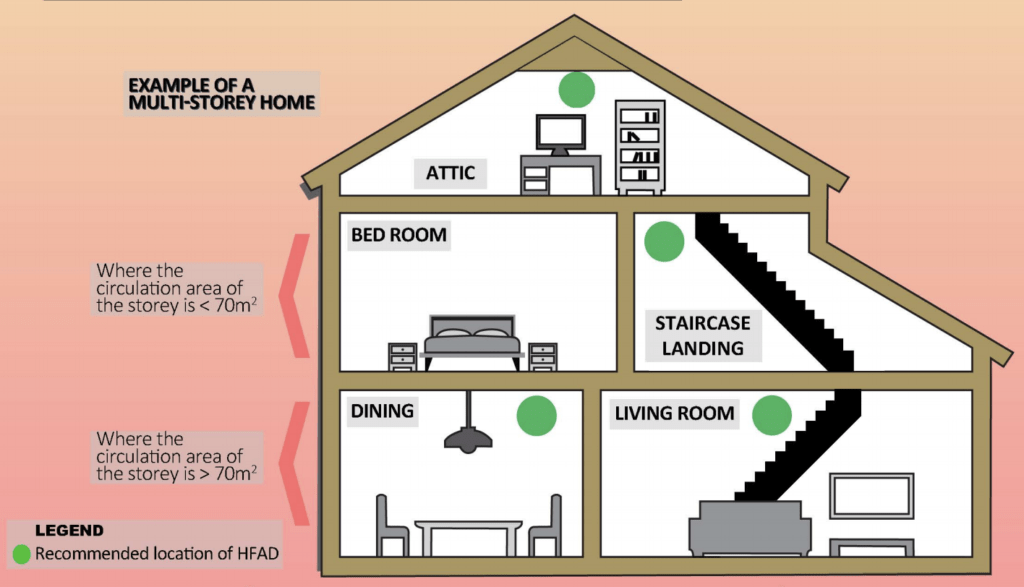
So what if smoke fills up escape route, you may ask? Here are some stats about smoke that you may not be aware of:
- Many fire casualties are from smoke (inhalation), rather than the fire itself.
- The temperate of the smoke can be upwards of 80 degrees celsius by the time it has built up. Most cannot endure staying around such temperature, much less to run through it. Don’t believe? Try dipping your finger into a cup of water of 50 degrees celsius.
- Smoke from household items burning are very toxic. Breathing in too much can make one unconscious due to lack of oxygen to your brain. Once one is unconscious, how does one escape?
- Smoke makes one loses directional sense. Many fire casualties were within metres of their main door because they were not able to find their main door to escape in the midst of the dense smoke. We recommend blindfolding oneself to try to navigate from room to main door in fire escape practice. This is very important in Singapore’s context where the main door is usually the only escape.
No Smoke Detectors In Dead Air Space
Dead air space are areas where it traps air and prevents smoke detectors detecting smoke. In a fire, smoke travels by rising up the surface of walls. If it meets a sharp turning point, it will not rise to the turning point as there’s trapped air. It will instead roll on top of that pocket of trapped air. A smoke detector mounted within the dead air space will not trigger since smoke doesn’t reach it.
There are many definitions to how large the dead air space is where the wall meets the ceiling. NFPA defines the space 10cm from the edge as dead air space. We should never install any smoke detectors in this area.
At Least 10cm From Any Edge or Highest Point
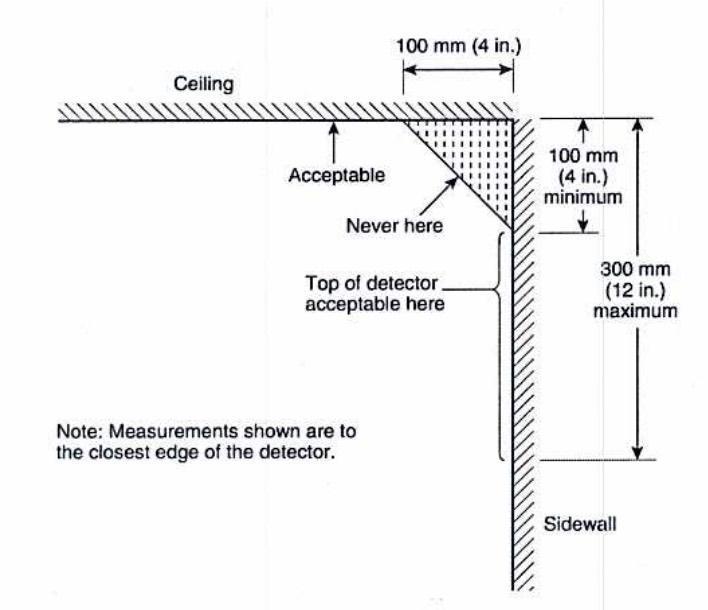
Take the room below as an example.
- The areas marked red are not suitable as they are too close to the edges.
- The 2 locations marked “X” are also not suitable as they are too close to the fan (high wind area) and too close to light sources (local temperature difference induces draft).
- The areas marked green are more suitable for this particular floor layout.
For rooms with sloped or pointed ceilings, we should install smoke detectors 10 cm from the top.
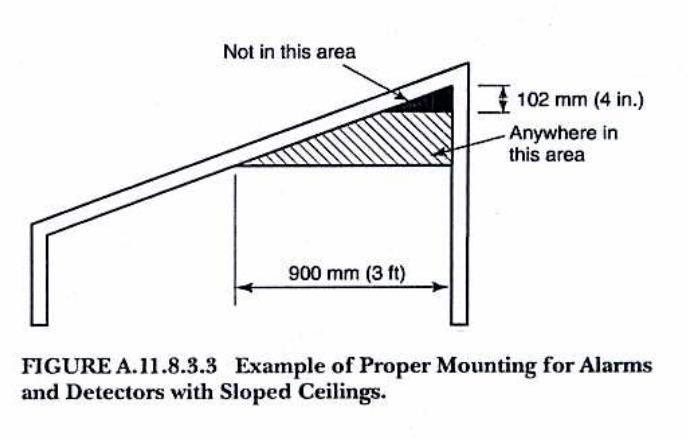
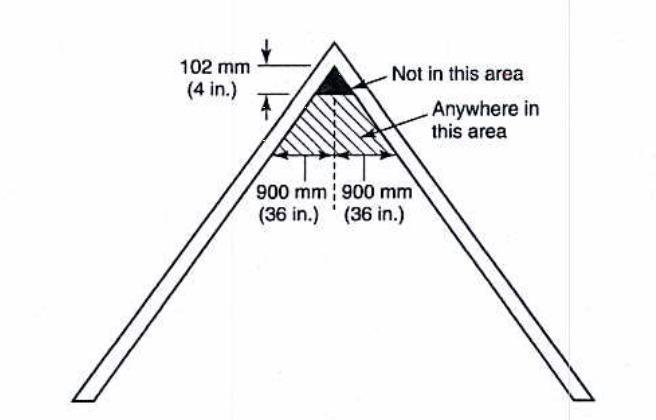
Can Smoke Detectors Be Wall Mounted?
Smoke always rises and spreads out upon hitting a barrier such as a ceiling. A smoke detector, on the ceiling, will be able to detect the spread-out smoke and sound off the alarm. Hence ceiling is always the best location.
A wall mounted smoke detector will need to wait for smoke to fill up the entire ceiling. This is less ideal since there will be delay in warning. But in situations where it is not practical to ceiling mount (eg very high ceilings), wall mount is an option.
Other Areas To Avoid For Smoke Detectors
Now we know we should install smoke detectors along escape route and never in the dead air space. Are there any areas that we should take note of?
Yes, of course! We also want to avoid locations of the following:
- Avoid open windows / doors as outdoor particles may trigger false alarms. Outdoor particles can include but not limited to smoke, heavy pollen, insects, or dust.
- Avoid areas with strong draft such as near the air conditioner or fan. Smoke detectors may not be able to detect smoke if the strong wind blows smoke away from the detectors. Have at least 30cm gap from the air conditioner or fan.
- Avoid steamy areas such as bathroom as steam may trigger a false alarm. The high humidity in these areas may also corrode the circuitry of the detectors.
- Avoid installing too close to light sources as light sources gives out heat and will have localized temperature difference with the immediate surrounding air, which will result in micro drafts. These micro drafts may result in false alarms. Have at least 10cm gap from the nearest light source.
- Avoid installing in kitchens. Cooking combustion particles from stove spills / broiling / searing may trigger a false alarm. We recommend installing smoke detectors outside the kitchen instead. If you must install in kitchen, we recommend heat detectors instead. Heat detectors detect increase in temperature and are insensitive to smoke.
- Avoid dusty or greasy areas. There will be faster buildup of dust / grease around the smoke detector. This results in decreased sensitivity Or it may cause a lot of false alarms. Heat detectors will be more suitable in such areas.
- Avoid altars. Smoke particles from incense sticks may cause a false alarm. If you want to safeguard against fire risks in altars, install smoke detectors at least 3 m away from the altar.
It is also worth noting the following::
- Ambient cigarette smoke does not trigger off a smoke detector.
- Fogging may trigger a smoke detector. One way is to cover the smoke detector with a bright coloured dust cap or bag. The bright colour is to remind us to remove the cap or bag when fogging is over. Most smoke detectors have a period of mute (around 9-15 minutes) on pressing of the hush button. Hence, it is wise to get a smoke detector where the hush button is very accessible. This way, one doesn’t need to climb on a stool or ladder.
Need More Help On Smoke Detectors Installation Locations?
We hope you find this helpful in deciding where to install smoke detectors in your home. The truth is every house has a different layout. Different layouts may need different installation locations. You are welcome to whatsapp us @ 88158752 with your floor plan. We will recommend you on installation locations. No obligations!
And here’s a self-served tool to help you get a quick recommendation of the least number of smoke detectors you need in your home.
Blaze Guard’s Photoelectric Smoke Detectors
-
Product on sale
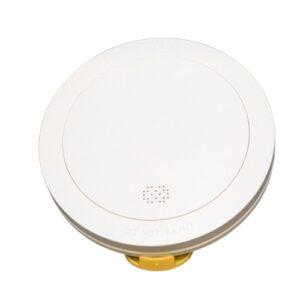 SD01 Interlinked Smoke Alarm (SCDF Approved)Original price was: $118.00.$88.00Current price is: $88.00.
SD01 Interlinked Smoke Alarm (SCDF Approved)Original price was: $118.00.$88.00Current price is: $88.00. -
Product on sale
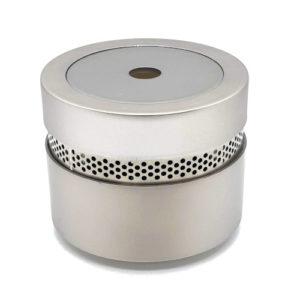 Nano Smoke Detector (SCDF Approved)Original price was: $69.90.$44.90Current price is: $44.90.
Nano Smoke Detector (SCDF Approved)Original price was: $69.90.$44.90Current price is: $44.90. -
Product on sale
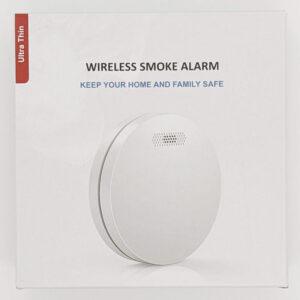 SM11W Wifi Smoke AlarmOriginal price was: $89.90.$49.90Current price is: $49.90.
SM11W Wifi Smoke AlarmOriginal price was: $89.90.$49.90Current price is: $49.90.
